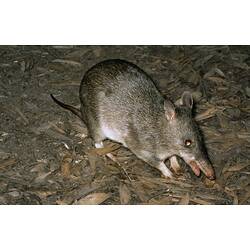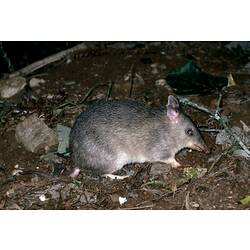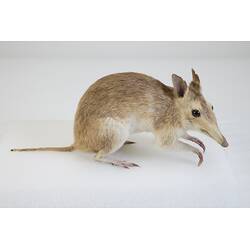General Description
Upper body fur brown and grey, underparts and feet white. Long nose and ears. Body up to 45 cm, tail up to 15 cm.
Biology
Long-nosed Bandicoots are active from dusk to dawn, digging cone-shaped holes in their search for insects, fungi and fleshy plant roots (tubers).
Distribution
Eastern mainland Australia.
Habitat
Coastal sandy areas, heaths, grassland and wet sclerophyll forest.
More Information
-
Animal Type
-
Animal SubType
-
Brief Id
Brown fur above, white below. Very long, pointed nose. Long, narrow, naked ears.
-
Colours
Brown
-
Habitats
-
Where To Look
-
When Active
Nocturnal
-
Diet
Omnivore
-
Diet Categories
Fungi, Invertebrates, Insects
-
Endemicity
-
Conservation Statuses
CITES: Not listed, FFG Threatened List: Not listed, EPBC Act 1999: Not listed, IUCN Red List: Least concern
-
Taxon Name
-
Scientific Author
Geoffroy, 1804
-
Common Name
Southern Long-nosed Bandicoot
-
Kingdom
-
Phylum
-
Subphylum
-
Class
-
Superorder
-
Order
-
Family
-
Subfamily
-
Genus
-
Species Name
nasuta




